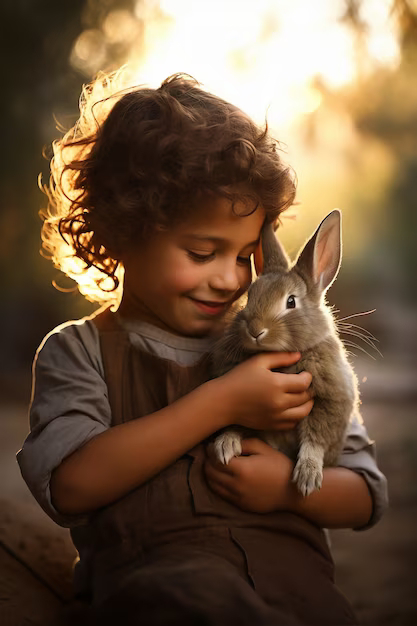Do Animals Really Have Favorites?
Have you ever wondered if your companion animals have a favorite family member? As a Nature and Animal Communicator, I've delved into this intriguing question, exploring the unique relationships animals share with each member of the household.
In countless conversations with various animals, a recurring theme emerges—they don't choose favorites in the way we might expect. Animals, it seems, are not entirely comfortable with the concept. Instead, they emphasize the special and unique connections they form with every family member.
These apparent preferences stem from the time spent together, the associations built, and the individual soul purpose and contracts forged between them and their humans. Energy plays a pivotal role in these relationships, as animals are remarkably sensitive to even the subtlest shifts in our emotional states.
Consider the scenario where an animal spends the majority of its time with the mother of the house. It's not merely about favoritism; rather, it reflects the sensitivity and unique bond shared with that particular family member. In many households, animals showcase a particular fondness for a family member who may not necessarily spend the most time at home, but may spend dedicated time with the animal upon their return. The key lies in the quality of time spent together rather than the quantity.
This ability to form distinct relationships is a testament to the emotional intelligence of animals. In essence, animals adapt and tailor their interactions based on their understanding of individual family members' preferences, needs, and unique dynamics. It's a beautiful dance of connection and communication that transcends the constraints of time and proximity.
Animals, being highly sentient beings, pick up on our energy, perceptions, and attitudes towards them. Their responses and behaviors often mirror our own reflections, forming opinions based on how they perceive we view them. This remarkable adaptability in animals extends to their great understanding of human needs and preferences. Consider the example of my mother's new dog, who has swiftly adapted to our family dynamics.
Despite not residing with my mother full-time, whenever I visit, the dog greets me with boundless enthusiasm, creating a connection that transcends physical presence. His attachment stems from our interactions, intuitive communication, and the recognition of my role in the family's decision-making.
While he's undeniably my mother's devoted companion, his relationship with me is equally significant. He acknowledges my presence, even in short visits, showcasing the depth of emotional connection that goes beyond mere time spent together. This newfound bond is a testament to the dog's ability to discern and cater to the unique needs and dynamics of each family member.
His diverse interactions with various family members, whether it's the undivided attention from the one going out regularly or the shared meals and pampering from my father, highlight the adaptability and responsiveness that animals bring to their relationships. In just 2-3 months since becoming a part of our household, this adult dog has seamlessly integrated into our family dynamics, showcasing the remarkable adaptability and sensitivity of animals. As someone who adopted us, he exemplifies how animals perceive and build relationships with their human companions.
While it might not be a matter of choosing favorites, animals undoubtedly form distinct connections based on physical interactions, energetic bonds, and daily routines. Each relationship is unique, tailored to the individual needs and dynamics of both the animal and the family member.
So, the next time you observe your pet seemingly gravitating towards one family member, remember—it's not about playing favorites. It's a nuanced synergy of energies, relationships, and unique connections that make our bond with animals truly extraordinary.
I hope you found this exploration into animal relationships insightful. If you've had similar experiences, feel free to share them in the comment section below. Let's continue learning from each other. Until the next blog, bye-bye.




Comments
Post a Comment